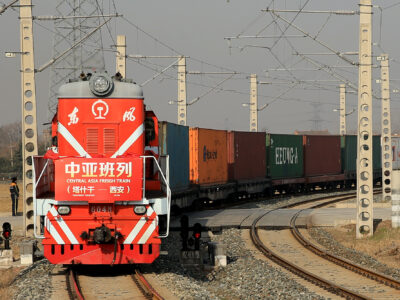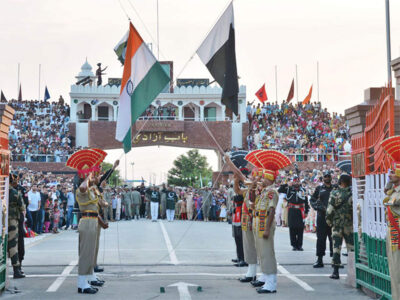Syed Ali Zia Jaffery
India’s Pakistan Policy: How Think Tanks Are Shaping Foreign Relations?
Author: Stuti Bhatnagar
Publisher: Routledge, India 2020
In 2016, the Observer Research Foundation(ORF), in collaboration with the Indian Ministry of External Affairs(MEA), launched the Raisina Dialogue. Hosted annually in New Delhi, the Dialogue brings together leaders, diplomats, military commanders, businessmen, and media personalities, from around the world to deliberate on some of the most glaring challenges facing the world. The initiative is a specimen of government-think tank cooperation in India, meant to harness strategic communications through the intellectual impetus added to the mix by think tanks. As of today, think tanks are fast-becoming important influencers that directly or indirectly, through research-oriented interventions, impact policymaking. The interactive equation is pretty healthy in the United States, not only owing to governmental support and funding, but also due to the liaison between think tankers, academia, and government agencies. The think tank phenomenon has pervaded South Asia too. The think tank community in India is ever-burgeoning. That most think tanks in India delve into foreign and strategic affairs is reason enough to look at how think tanks shape Indian foreign relations and strategic directions. In her new book entitled ‘India’s Pakistan Policy: How Think Tanks Are Shaping Foreign Relations?’, Stuti Bhatnagar, has shed light on the symbiotic relationship between Indian think tanks and the government in a bid to analyze the influence of the former on India’s foreign relations. For the consumption of the study, Bhatnagar focuses on India’s policy towards Pakistan, a country that, according to her, is one of India’s biggest foreign policy concerns. In explaining why India’s Pakistan policy was chosen for this study, she writes:
As a key security concern for India, therefore, the dynamics of the relationship with Pakistan has created both official and unofficial interest. Engagement with India’s strategy towards Pakistan has been at the forefront of research agendas in most security policy think tanks. Yet, a critical examination into think tank discourse on India’s Pakistan policy is missing. Further, the existing literature has not considered the unique contribution of think tanks in formulating a discourse on peacebuilding that makes way for an emboldened and more substantive foreign policy towards Pakistan. A critical examination of India’s Pakistan policy therefore presents a good test case for the analysis of the role of think tanks in general, and an examination of the nature of their policy ideas in challenging or supporting existing policy frameworks in particular.
That Pakistan continues to dominate India’s politico-military and academic discourse, even in the face of an ongoing crisis with China, makes it all the more important to discuss as to whether there is a nexus between think tanks’ research and government policy on Pakistan. Using a Discursive Institutionalist-Gramscian Framework, Bhatnagar examines the role of think tanks in giving policy inputs and mobilizing public opinion on Pakistan. She chooses to trace how think tanks analyzed, debated, and framed the Indo-Pak Composite Dialogue. The author does that with a view to assessing as to how far have think tanks endorsed and/or challenged New Delhi’s official narrative. To do this, the author establishes a connection between government funding, intellectual footprint, and the research outputs of think tanks, by categorizing think tanks into government and non-government ones, with the latter including two sets of think tanks. Bhatnagar cogently makes the case for using the DI-Gramscian framework as the anchor of her book. She argues: “This volume bridges the perspective of the Gramscians with the DI focus on institutions to account for the think tank position in Indian policy structures.”
The author compellingly weaves together parts of the government-funded and run think tank compendium. She rightly argues that, by virtue of the staffing and memberships of think tanks, government patronage, and the role of intellectual doyens, government-funded think tanks like the Center for Land Warfare Studies (CLAWS) and the Centre for Air Power Studies (CAPS), among others, toed the line of the state while sidelining alternative views. The argument has been lucidly articulated, and correctly depicts how the Indian government has used think tanks to shape public opinion, communicate, and develop consensus on policy directions. India’s Pakistan policy, which lies at the heart of this study, has been perpetuated by the state-oriented research products of these think tanks. It is reasonable to argue that government’s direct espousal translates into its having clout over think tanks. In addition to squeezing space for the projection of alternative ideas, such a scenario puts question marks on the credibility of research conducted in institutes that are considered to be India’s best. That cooperation and coordination is undergirded by constant, close-knit engagements between policymakers and the think tank community is something that the Indian government can use continually to sell its anti-Pakistan policy, both domestically and internationally. Thus, it would be difficult to separate credible research-laden output from propaganda. If anything, based on the erection of an invisible, informal revolving door, as acknowledged by the author, India’s policy on Pakistan would remain hostage to politics, shrinking the space for voices that advocate for dialogue, restraint, and responsibility.
As the author correctly enunciates, even non-government think tanks have not been able to vociferously counter the dominant state narrative. As adroitly explained by the author, non-government think tanks like ORF take advantage of the relative freedom accorded to them by funding from private sources, and propose options that are not necessarily in conformity with New Delhi’s basket of ideas. While that is good news as far as expanding the debate and array of policy-responses are concerned, the degree of freedom is less impactful and short-lived. The author attributes this to government’s control on funding-related legislation, think tanks’ bid to maintain their relevance, and government’s dwindling interest in a particular policy option. It would not be wrong to say that even the relatively independent think tanks go with the flow and ensconce their research-agendas within the overarching, government-led policy contours.
Bhatnagar discusses the third set of think tanks, which is different from the other two groupings. Peacebuilding think tanks were deemed insulated and not embedded into the systems. According to Bhatnagar, this cuts both ways. While those think tanks could determine their own research paradigms and directions, their reach and ability to influence policymaking is limited. Away from the corridors and levers of powers, those think tanks, as the author fittingly concludes, are at pains to sustain and survive, and hence are compelled to atone their works so as to avoid conflict with a well-entrenched bureaucracy. Credibility and objectivity, at the end of the day, will be compromised due to the desire to ‘fit-in’.
The author succinctly looks at the alignment of the think tank community with the foreign policy gambits and approaches of the Modi government. The author could have made her point well-rounded by analyzing this bonhomie through India’s politico-strategic lens. She ends her analyses by dispelling the impression that think tanks in India act as bridges between academia and politics. She writes:
To summarise, think tanks are neither neutral bridges between academia and politics nor have they always functioned for the public good. They have acted as carriers of coordinative and communicative discourse, a role that is at the heart of the political debate.
It could be argued that New Delhi has created an echo-chamber, in which its hawkish panaceas to its so-called Pakistan-problem sound viable. All this does not augur well for a policy change that promotes peace, given that the overbearing state, through its very instruments of control, discourages intellectual pursuits towards that end.
Bhatnagar’s thesis brings to the fore some important dynamics, from which Pakistan could learn as to how it can leverage the think tank phenomenon to lend strength to its India policy while rallying domestic and foreign backing. The government must enhance and enrich the literature on India, by drawing on the expertise of intellectuals, who should be well-integrated into the system through a revolving door policy. Seamless succor from the government without resorting to the micromanagement of think tanks, could be the precursor to sound policymaking that enjoys the ratification of the public. At a time when Pakistan is fighting on many fronts to rebrand itself and expose the wave of misinformation and propaganda, think tanks should be used as communications conduits and information carriers, in a similar manner to how those located across the border are being used. This, as this study suggests, will increase the volume of research on India, something that is much-needed. In a milieu that is being shaped by India’s state-driven discourse on Pakistan, it is only befitting and timely for Pakistan to effectively use think tanks as a strategic tool of knowledge-creation.
Bhatnagar’s work is a must-read. A follow-up study should look at the strategic rationale of New Delhi’s position on think tanks, and how could that affect the trajectory of India’s Pakistan policy, and how could room for contrarian views be made, in such a charged and convoluted socio-political situation.








Comments